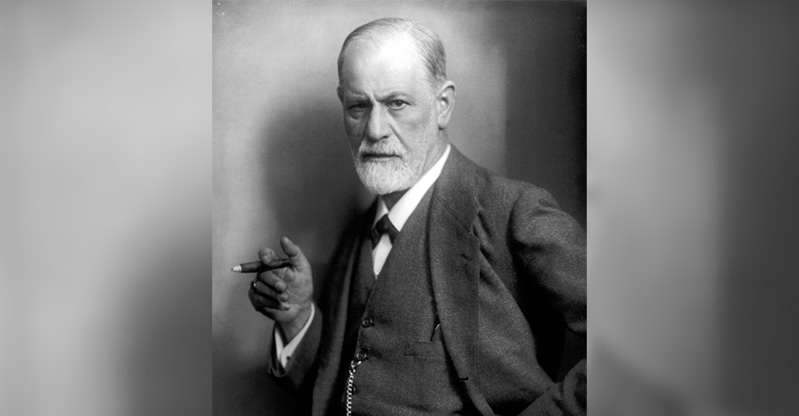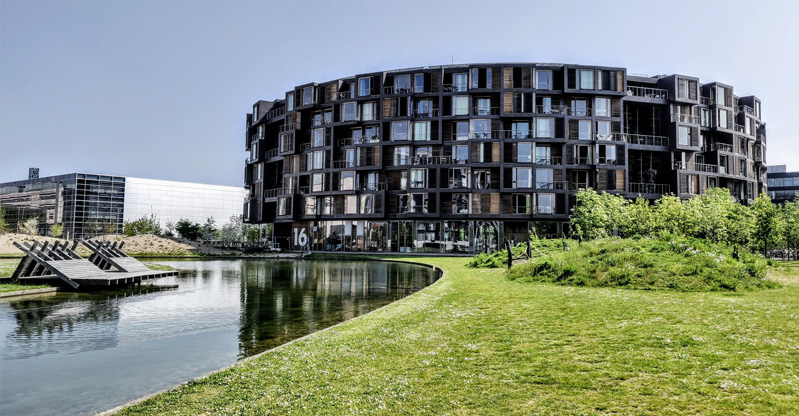Metamodernism is the current paradigm that cultural theorists use in approaching many aspects of society. This includes education. Metamodernism has discerned trends that allow for a greater variety of disciplines. These are integral to making your child more versatile in the years to come whether that’s in their careers or their lives.
To fully understand Metamodernism, we need to look at what it is a response to. Two cultural and artistic paradigms came before it. Let’s look at these first. Starting with Modernism.

Advances in science, engineering, psychiatry, and psychology led men and women like Sigmund Freud to search for universal truths. In Freud’s case, it was the mechanics of the unconscious mind.
Modernism was rationality, simplicity, order, and a quest for truth
Modernism hit Western culture at the turn of the 20th Century and stayed with us throughout the age of radio and beyond, till about the 1950s. Though some forms of Modernism persist even to the current day. In a sense, that’s partly Metamodernism, but more on this later.
What was Modernism?
It was an embrace in the rational, believing we could come to the answers through scientific processes. Psychologically, it was about being part of history. People were beginning to become less self-sacrificing, as the two world wars took their toll on the psyche of every nation that partook in them.
There was a belief in a single, universal, and objective truth. And we could find it through rational discourse, the scientific method, and carefully plodded philosophy.
Modernism took history and turned it on its head. It rejected aspects of the past that no longer worked. Modernists celebrated the now, making meaning of the present, working towards a better future through technology development. With a worldwide utopia as the end goal.
As a movement, it was an attempt to create order in a disordered universe.
In the schools, this sense of order prevailed. Teachers were paragons of discipline.
They followed the strict hierarchies of the day, with the principal at the pinnacle of the schooling structure.
Students conformed to the norms. They acted according to the expectations set upon them, trying to uphold the honor of their family name, and were not interested in any kind of defiance.

Post-Modernism, in its deconstruction of the past, became enamored with a pastiche of different methods and techniques, often used ironically. Scholastically, it was about ordering the chaos.
Post-Modernism: Aphrodite plugs into Spotify
Post-Modernism was a cynical cultural response that began to take the place of Modernism. From Modernism’s more positive spin on history came post-Modernism’s dissection of it.
The arts were an era of deconstruction and reconstruction of previous styles. It was also a rejection of the idea that there is universal objectivity.
There was an acceptance of individual truths, their layered complexity, and the right to live alongside other interpretations of reality.
Meaning was what you made of it. No longer was rationality trusted and the scientific method was viewed with skepticism. Campfire philosophers — discussing the meaning of life to the setting of a strummed guitar — became a thing.
And in the academic world, schooling had more than a dash of chaos thrown in. Suddenly, teachers, who were once representatives of order, became administrators keeping the peace. The hierarchal structure remained, but teachers had now entered the age of rebellion.
They dealt with it best as they could by attempting to resolve issues as they arose from systemic fault lines.
Meanwhile, the modes of study remained much the same. Schools still employed the studying-for-exam method that served it, well, mediocrely over the past several decades.
Students often came out of high school, unprepared for the rigors of academic life in university, where the challenges include critical thinking.

The modern(ism?) corporate environment. Looks a bit like a beehive from this perspective, doesn’t it?
(Post-)Modern schooling and why it disadvantages your child
Quite simply, the entire purpose of the education system is to create workers for corporations or companies.
Your child is being prepared for a life of work and one that emphasizes contributing to the economy. The education system of the past, and sometimes the present, often wasn’t, or isn’t, interested in the happiness and fulfillment of your child. (What we would call self-actualization.)
It’s about filling up a position in a company chair to do the company’s work, which is to make the company money. This then keeps the economy going. All fair and good, right?
Wrong, because the problem is the focus is often too narrow. We create office drones by having a rote-learning system, which is not that great for stimulation or engagement. And drones with a significantly lower level of happiness at that.
And happiness counts. That’s where Metamodernism comes in. Metamodernism as a lens has identified the trend that started with the Millennials.
Millennials are far more likely to quit a job than generations before.
According to a 2016 Gallup poll in the United States, 21% of Millennials had switched jobs within a one year period — three times more than any other generation. And now that Generation Z is coming of age, they are also becoming part of the trend.
These two generations seem to rather resign than bear with specific workplace issues. They reject the notion that kept previous generations bound to their office chairs: that work is just a part of life we must accept.
They’re looking for a job that gives them some sense of self-actualization. They want more engagement from their employers. This lack of meeting their needs is what causes them to try to find fulfillment elsewhere.
There’s a hunger for it.
So, what is Metamodernism? It is a paradigm that oscillates between Modernism and Post-Modernism and goes beyond it.
It is about life now: I am the creator of my life’s journey (Modernism), but what does it mean to be a creator, and what are the implications for my life (post-Modernism)? Together, they form Metamodernism: I will go on a journey of discovery to find out.
Schooling today
Many schools try and make life skills classes a supplementary part of the education system. But there isn’t enough of an emphasis on it. There’s still a strong hierarchal structure that disempowers teachers from helping their learners in the best way possible.
Ironically, the only schools that give their students individualized care are the so-called “special schools”. This doesn’t just include students with intellectual disabilities, but learning disabilities too, even though they may have a high intellect.
Such as students with ADHD and other learning disabilities like high-functioning autism. They can compete with students in so-called ordinary schools. They just need specialized lessons and a daily structure best suited for their needs.
The approach of these schools is right. They focus on the individual and the individual’s needs, rather than a blanket approach applying to all students sitting in the classroom.
Meanwhile, like Modernism schools, post-Modern schools still use the “fit in” model.

The Nordic countries provide great examples of how integrated, individualistic schooling leads to happier citizens who contribute more to society. Like, for instance, on the topic of sustainability and finding a way to live alongside nature.
The Metamodern looking glass.
Metamodernism is seen as the post-post-Modernism lens for which we approach cultural theory — and in this case, schooling. And there are some excellent examples of Metamodernism as a schooling philosophy. These are found in the Nordic countries. This includes Norway, Iceland, Finland, Denmark, and Sweden.
Most Nordic nations score in the Top Ten of the Happiest Countries to live in. What does that mean? In the 21st Century, and through a Metamodernism lens, this equates to a significant degree of self-actualization.
Modernism said we are the creators of our own destiny. Post-Modernism said, what does it matter anyway. And Metamodernism says who cares what matters if you feel actualized as a human being.
What this means is different for different people.
The artist is actualized when he paints his masterpiece. The writer, when she’s penned her magnum opus. The composer? His great symphony. For the policeman, it’s his sense of bringing order to the streets. And the doctor? Her healing patients who go home from the hospital to their families.
Self-actualization is the pinnacle of human achievement. It is essentially what gives the self-meaning. Without it, are we not lost souls?
In the Nordic countries, their citizens are actualized, fulfilled in their occupations, and this is in large part due to their schooling system.

Sweden, as with other Nordic countries, places an emphasis on its learners’ experiential journey. And part of that journey is the application of STEAM subjects like technology in their education.
Metamodernism as a schooling system
Oscillating between the grand narratives of Modernism and the deconstructionism of post-Modernism, comes a pivot point. Between the rationality of the former and the multiple truths of the latter comes a unique citizen with respect for other cultures and beliefs. But subscribes to the greater whole we all makeup.
As such, Metamodernism in schooling considers the needs of students rather than the tyranny of the syllabus.
It’s about ensuring the students learn essential skills that become part of their everyday lives. Not just skills to make you the perfect office robot. Rather, skills can be used to implement changes in your life, overcome hurdles, and find your own path to happiness.
This includes a more flat-down structure of hierarchy among teachers, who are grouped together and work through consensus. The Nordic students get given a greater sense of self-worth within the system. While at the same time, learning some of the core lessons will fulfill their relationships and problem-solving in the future.
Have you heard of STEAM? Chances are, you have. But more on that later. For now, we’ll consider the Four C’s, which is what makes STEAM an integrated teaching philosophy as seen by Metamodernism.
The Four C’s.
Critical thinking
Communication
Collaboration
Creativity and innovation
Let’s explore that.
Critical thinking is necessary whenever approaching a problem. The old ways of doing things? Not working that efficiently. Should we continue to follow them as every generation before us has? No, there must be to be a more efficient approach.
Communication: so very vital. It’s easy to miscommunicate. And that causes all kinds of problems. Mistrust being one of them, in terms of group dynamics. Communicating your ideas correctly and in an easy-to-digest way is essential for a team to be aligned.
Collaboration. We’re a species that has only survived to this point due to collaboration. It’s in our genes. With it, we outsmarted sabretooth cats eager to make us their next meal. And with it, we outmaneuvered a literal mammoth of a beast to feast upon. We need it in our day-to-day, for the good of the group and, ultimately, ourselves. With it, we become more than the sum of our parts, capable of sending crafts to the moon, capable of mastering the atom.
Creativity and innovation. This is where the ideas come in. It is essential to cultivate one’s creative side. Whether it’s through the arts or in a constant tackling of even the most challenging of problems, creativity serves us well in problem-solving. And in developing the next big idea to take our species ever closer to the stars.

So what is STEAM? Well, it’s positively Metamodern.
The Nordics aren’t the only ones who use a Metamodern approach these days. There is now a system of education referred to as STEAM, a teaching philosophy used around the world. Initially known as STEM, it stood for Science, Technology, Engineering, and Math.
Once considered to have a looser connection to each other, the new philosophy meshes the group more tightly. To give students a good grounding in all four.
But this isn’t just done in the traditional way, which caused some students to fall behind. This isn’t rote learning anymore.
These subjects are integrated and actively taught today through certain online schools and educational approaches. Take this example:
Students are presented with a disassembled robot. Their task: to assemble it and get it not only operational, but following coded commands.
This exercise gets them excited because kids love robots. But it also teaches them the science behind robots while they’re understanding the technology combined with the engineering in constructing it.
Finally, they code the robot to behave in certain ways, perhaps a little robot dance to impress the little robot ladies.
Coding has its connection to math, which is, at its heart, adding, subtraction, division, and multiplying. That’s the essence of coding.
But now there’s an “A”.
STEM is no longer just STEM. An “A” has been added, turning it into STEAM. What does the A stand for? Well, one of the subjects we consider most important!
Art.
And art is important for critical thinking. Learning art history is a dive into the series of movements and what they stood for, what they reflected, their philosophies to do with the age they existed in.
Art is the practice of creativity. With our robot example, it would be the kids experimenting with coding commands to see what limits they could push the robot to do.
But art is important in today’s world of content creators who express themselves through their creativity. And creativity is a powerful driver for problem-solving. The oft-used expression is “thinking out the box”. We prefer to think of it as being outside the box. And then turning it into a useful object, like a key to unlock our creative selves.
It’s meta.
Meta in Metamodernism means going beyond. When you think of what you want for your child, an ideal must be a 21st Century citizen capable of being an asset to their company or team. Or perhaps starting a company themselves.
One of the best parts of STEAM-backed education means that in this age of online learning, the student can always add to the skills needed to further actualize themselves. Of course, a good place to start is with a STEAM-focused e-school like Tekkie Uni.
That’s what STEAM essentially is. A Metamodernist approach to education which empowers children with the skills needed to further develop abilities and, if necessary, self-teach themselves for upskilling purposes.
This results in a capable citizen with a good grounding in all the essentials — combined with a critical thinking brain and an ability to collaborate with others.

Coding and App Development are just two of the courses we have on offer. These are great for teaching this era’s essential skills. And not only the hard skills. The soft ones are as important, too.
STEAM is a focus of Tekkie Uni. And that makes us Metamodern.
At Tekkie Uni, we teach a variety of subjects that are all plugged in, in some way, to technology. The exception is chess, though that is still connected to critical thinking and math.
We say math because you need to be able to think ahead by a certain amount of moves to win. And critical thinking, because you strategize while predicting your opponent’s next move.
As for our other subjects, such as coding, YouTube Content creation, and app development, collaboration is also an emphasis for us. We have online classrooms and unique online social environments where students can help each other out.
Most importantly, collaboration is key to success as failure will occur often. Failure is to be expected when doing something as precise as writing code correctly. But students will learn to rise above their failures like a phoenix — especially when they ask their classmates for help. Allowing them to make the necessary connections in their mind.
Our approach has seen hundreds of young people excitedly learn online. Seen them work together with others. Think critically and problem-solve so they become positive in their approach to complications, instead of frustrated and stuck.
This is what makes them valuable to future employers, or even find value in their own entrepreneurial abilities, despite us living in an uncertain world. And through it, they will discover the paths that take them on life’s journey. Wherever it may lead them.
Here’s the first step in the journey.









